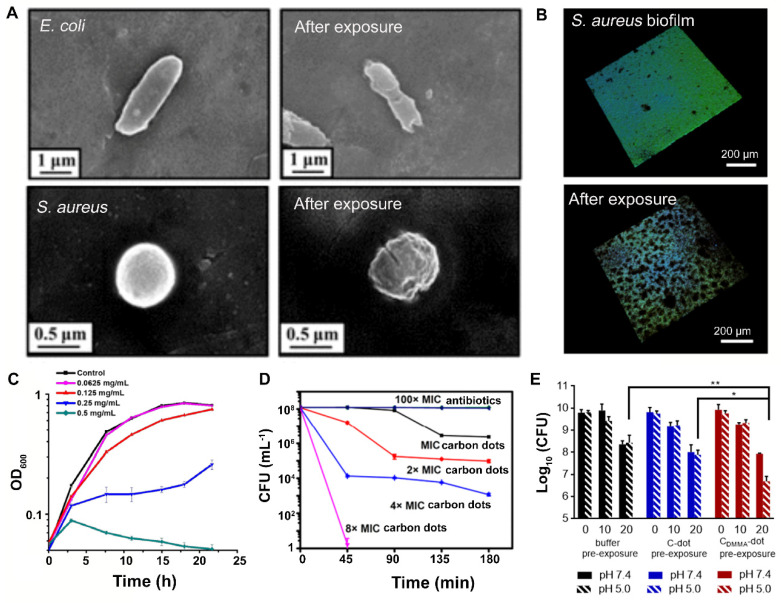Figure 9.
Examples of the antibacterial activity of carbon quantum dots according to different antibacterial mechanisms and synergistic use with antibiotics: (A) Cell wall damage to E. coli and S. aureus, inflicted upon exposure to cationic carbon quantum dots, pyrolytically synthesized from spermidine. Reproduced with permission from Ref. [37], copyright American Chemical Society, 2017. (B) Disruption of the EPS matrix of a S. aureus biofilm by carbon quantum dots synthesized from carbon fibers by acidic oxidation, causing biofilm dispersal. Reproduced with permission from Ref. [94], copyright American Chemical Society, 2019. (C) Growth inhibition of P. aeruginosa upon exposure to different concentrations of carbon quantum dots, hydrothermally synthesized from aminoguanidine and citric acid. Reproduced with permission from Ref. [84], copyright American Chemical Society, 2019. (D) Killing of stationary-phase MRSA upon exposure to nitrogen-doped carbon quantum dots, hydrothermally synthesized from a bis-quaternary ammonium salt, as compared with killing achieved by penicillin and gentamicin. MRSA were exposed to different concentrations of carbon quantum dots. Reproduced with permission from Ref. [47], copyright American Chemical Society, 2019. (E) Pre-exposure of S. epidermidis ATCC12228 biofilms to carbon quantum dots without (C-dots) and with 2,3-dimethylmaleic-anhydride (DMMA) functionalization (CDMMA-dots) yielded enhanced killing upon 72 h exposure to vancomycin at pH 5, as occurring in infectious biofilms. * p ˂ 0.05 and ** p ˂ 0.01 indicate significant differences with respect to vancomycin in absence of prior carbon dot exposure or prior exposure to C-dots (one way ANOVA). Reproduced with permission from Ref. [75], copyright ELSEVIER, 2020.

